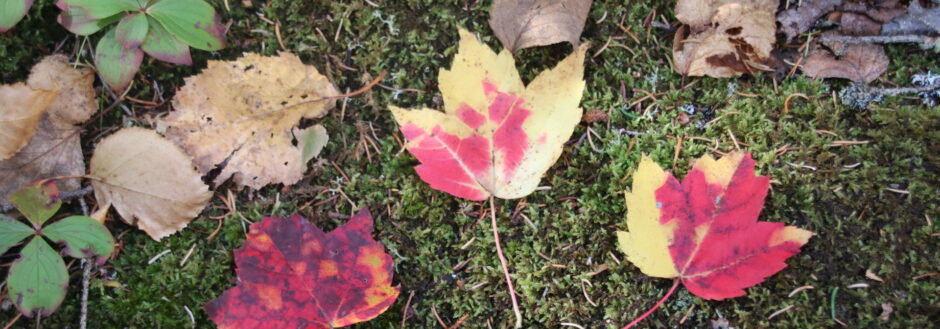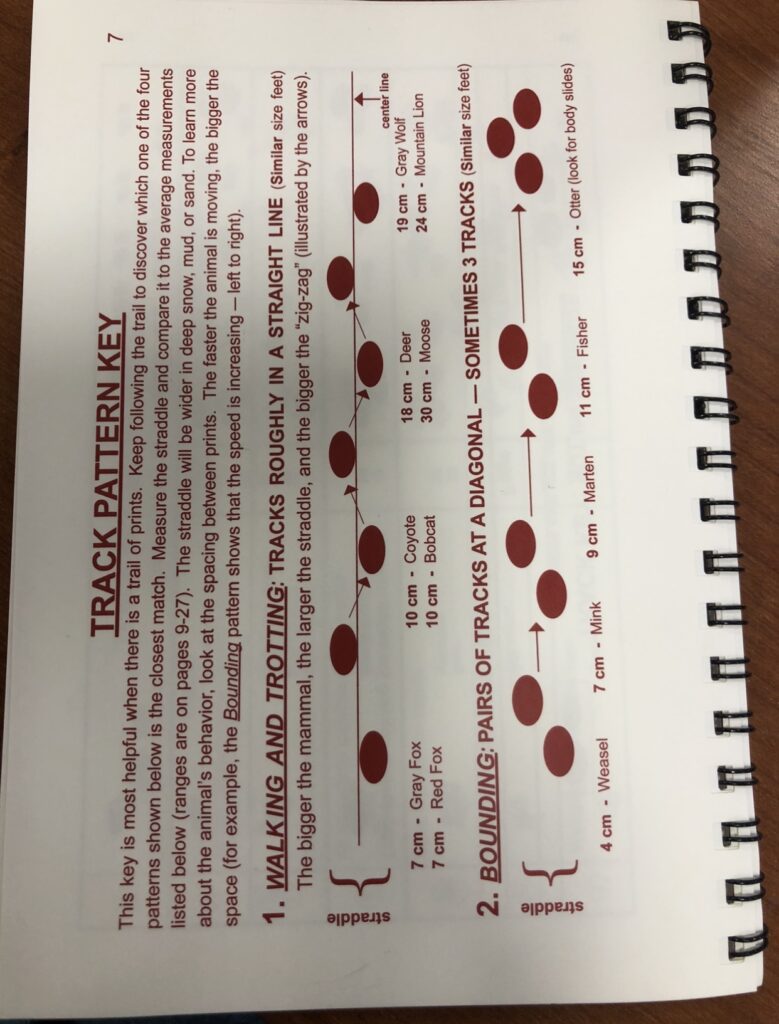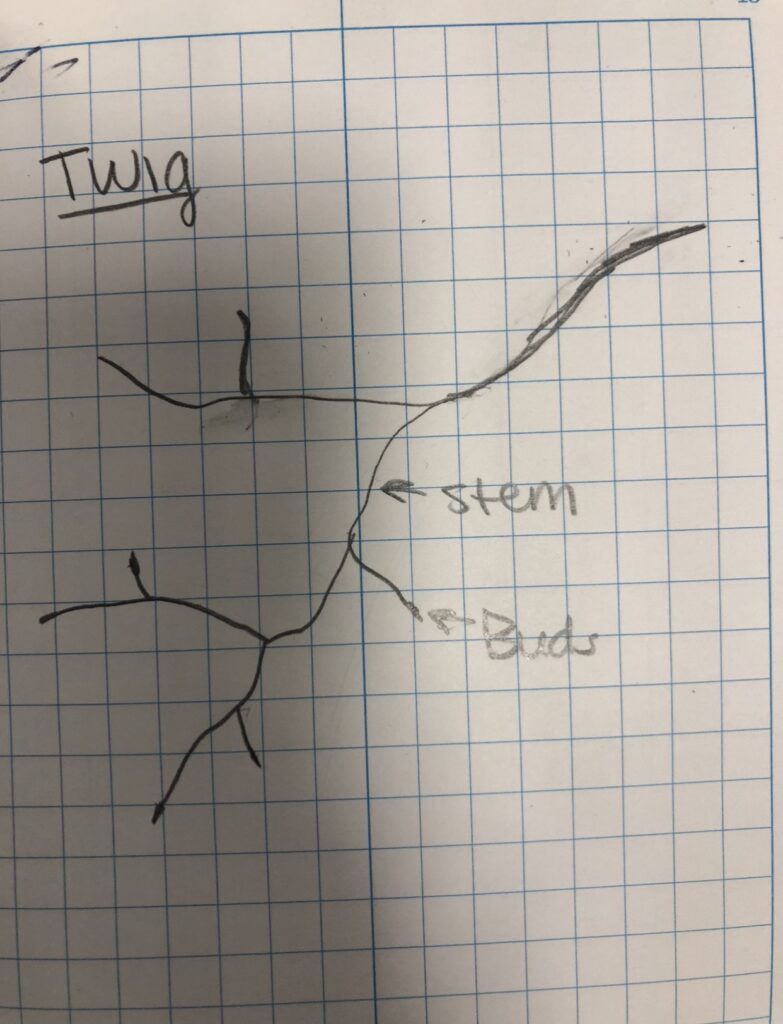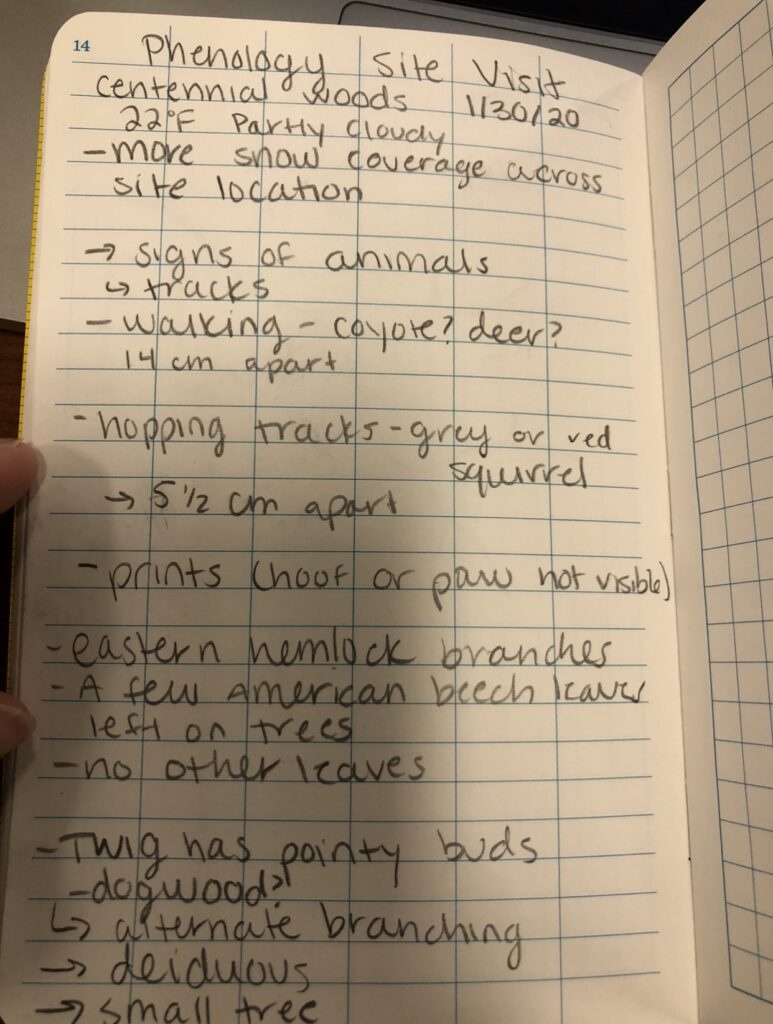January is an important month for many of the flora and fauna in the forest. It is a time of intense survival tactics, and for some, hibernation. My location in Centennial Woods has experienced several phenological changes since my last visit. There is a much heavier snow cover on the ground than there was for my last visit. Additionally, there is more evidence of animal interaction with my site through the snow tracks.

Tracking
The tracks that are apparent in this photo represent a walking and trotting pattern. The tracks are between 10 and 18cm apart which makes it possible that they could belong to a coyote or a deer. Additionally since the tracks are a bit older, it is difficult to distinguish paw/hoof prints which would be a good indicator of the species.
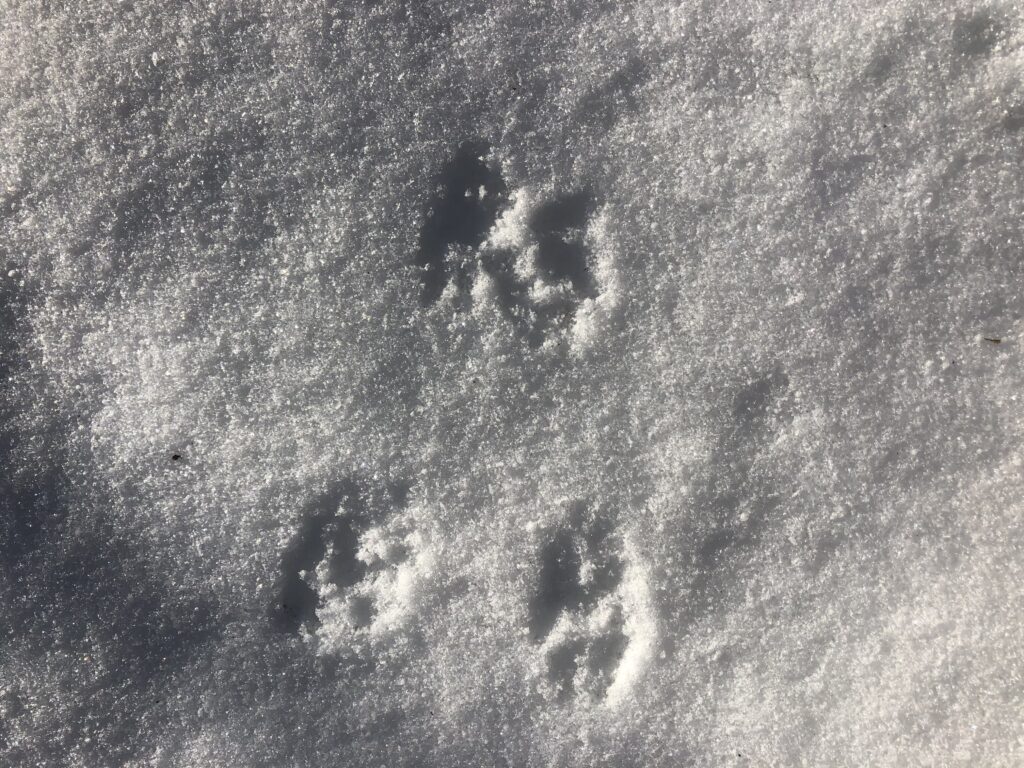

More Tracking!
These tracks represent a bounding pattern.
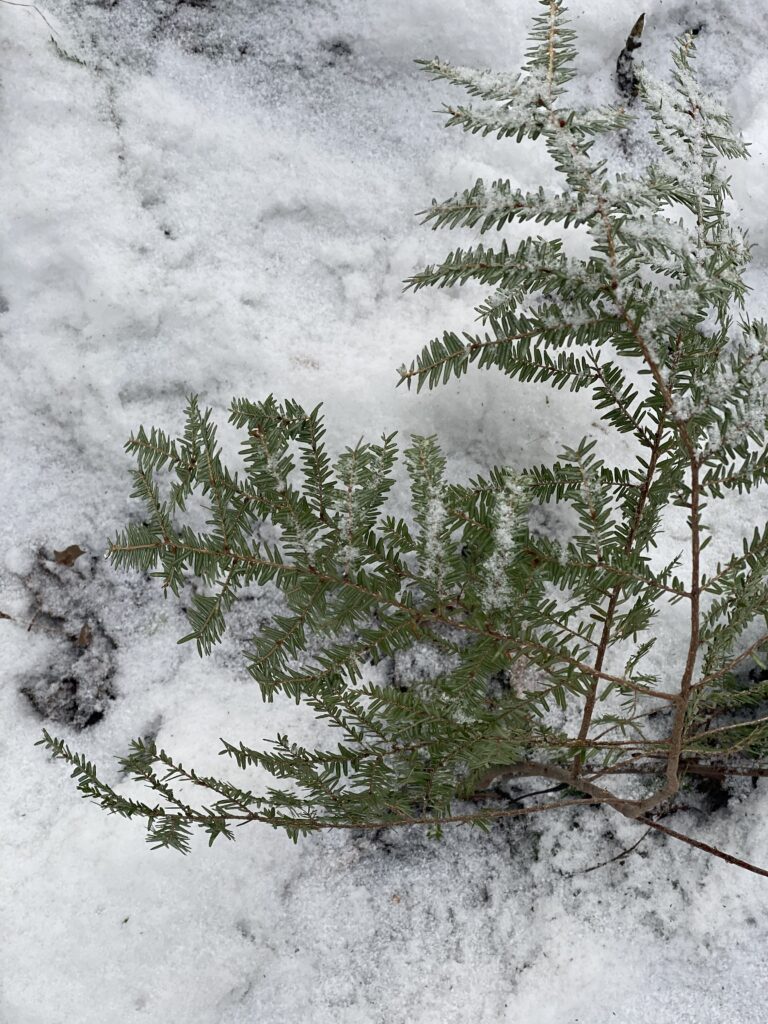
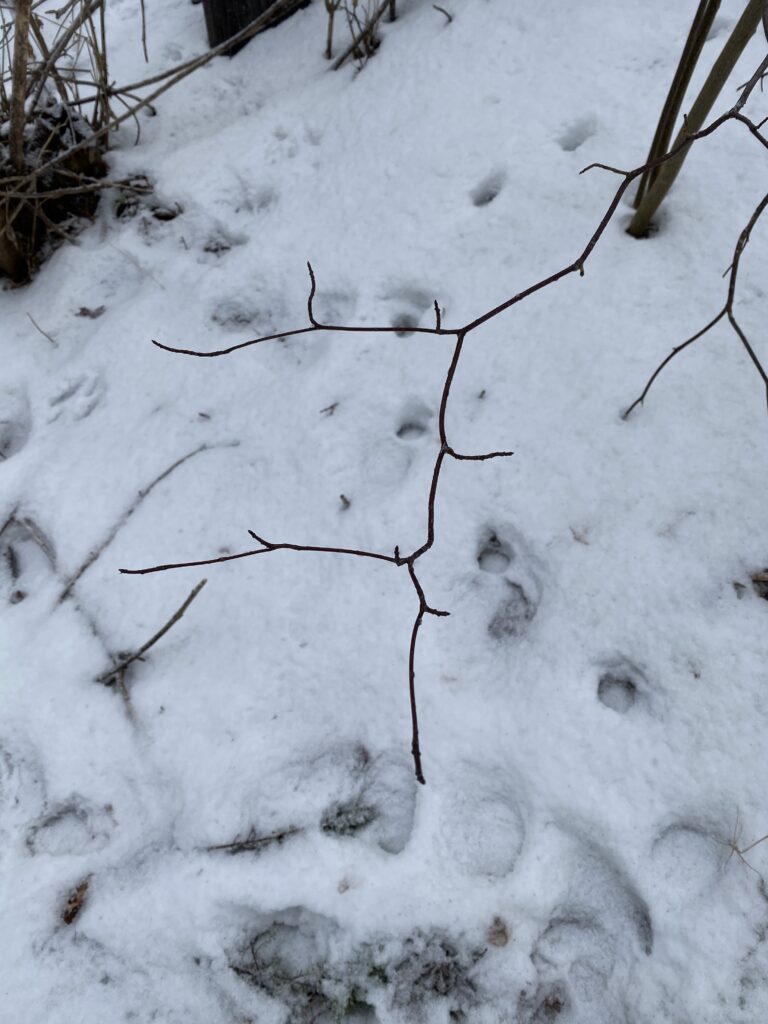
This twig has alternate branching and pointy buds. The tree it comes from is relatively small and looks like it may be a juvenile Sugar Maple branch.
References
Levine, L., & Mitchell, M. (2008). Mammal tracks and scat: life-size tracking guide. East Dummerston, VT: Heartwood Press.
TREE BRANCHES 1: SUGAR MAPLE. (2016, December 6). Retrieved from http://northernforestatlas.org/2016/12/06/tree-branches-1-sugar-maple/
Holland, M., & Kaneko, C. (2019). Naturally curious: a photographic field guide and month-by-month journey through the fields, woods, and marshes of New England. North Pomfret, Vermont.: Trafalgar Square Books.
